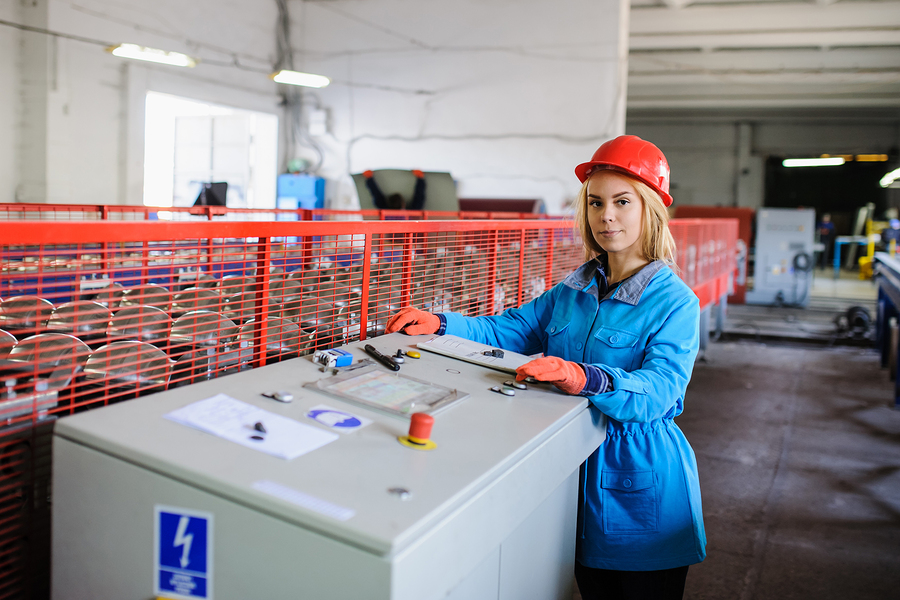Manufacturing facilities are expected to run at optimum efficiency to maximize output and reduce costs. And while the expectations of “lean manufacturing” can bring added pressure to management-level personnel, homing in on output and cost metrics can reveal deep-seated issues that might otherwise go unchecked.
Here are some of the most common issues at manufacturing facilities that can have a significant impact on your bottom line.
6 Common Problems in Manufacturing
Poor team alignment
Team alignment is a critical aspect of any work environment. In fact, a survey completed by ClearCompany found that ”97% of employees and executives believe lack of alignment within a team impacts the outcome of a task or project.”
In manufacturing facilities, strong alignment boils down to communication. When production workers, maintenance staff, and executives stay in their silos, chances are that workers won’t meet expectations and frustration will ensue. Defeat communication barriers by holding daily stand-ups, instating an open-door policy, and arming workers with digital communication tools.
Unrealistic expectations
It’s exciting when productivity soars and profit margins widen. However, it can be easy to hold unrealistic expectations after an uber-productive few weeks. Just because your output increased by 10% in one month doesn’t mean that sort of growth is sustainable. Once you stop hitting those once-coveted and celebrated numbers, morale will drop from the top down — a proven productivity killer. So when you’re setting productivity goals, make them challenging, but attainable.
Being unprepared for inspections
Even if you’ve never had a surprise inspection, you still should operate like regulators could walk in the door at any moment. Otherwise, you run the risk of letting small issues slip by, which can eventually transform into deep-rooted, systemic problems that are both dangerous and blatantly obvious to inspectors. And if you keep an eye on the headlines, you know that regulators have no qualms with handing out hefty fines and temporarily shutting down operations if your workers or the environment are in jeopardy. Cutting corners isn’t worth getting shut down. Instead, be proactive and take care of issues as they arise.
Not having consultants to call
What happens when regulators do knock on your door and give you a laundry list of things to remedy before they check back in? With a full workload and staff to manage, many environmental or facilities managers turn to the help of third-party consultants. Since you might have a tight time frame to work with following an inspection, it helps to develop a relationship with a reliable consultant before you need one.
Consultants can help you break down exactly what needs to get done, how to complete each task, and in what order. And when you find a consultant you like working with, you’ll have someone to call, text, or email with questions instead of having to wade through the depths of Google.
Lack of staff training
If your onboarding process involves initial training and then throwing workers into the deep end, your facility will never reach its full productivity potential.
Here’s why:
-
- One sweep through training can’t cover everything a worker needs to know in a high-risk environment like a manufacturing facility.
-
- Without continuous training, there’s a good chance that the worker will quickly become disengaged, which can result in sloppy or slow work.
- Inadequate training can lead to turnover issues; 40% of workers with poor training leave their jobs within the first year, citing lack of skills training and development as a main reason for leaving.
Avoiding productivity issues that stem from lack of training can be remedied by requiring regular training, holding daily stand-ups, and sharing safety stories. The key is to keep your workers safe, engaged, and informed.
Poor housekeeping
When workers on the plant floor are rummaging around for PPE, dodging slip and trip hazards, or trying to read machine displays through a blanket of dust, it’s clear that housekeeping is an issue. A messy environment isn’t just damaging to productivity — it can be dangerous.
If you don’t already have maintenance crew on staff that’s responsible for the cleanliness of your facility, consider bringing someone on. Additionally, communicate to your workers the importance of housekeeping in manufacturing.
Whatever you find is holding you back from optimum productivity, you need to formulate and implement an action plan for improvement to see your numbers rise.
Related reading:
Maintenance Issues You Might Be Missing
Environmental Standards, Permits, and Regulations for the Manufacturing Industry

